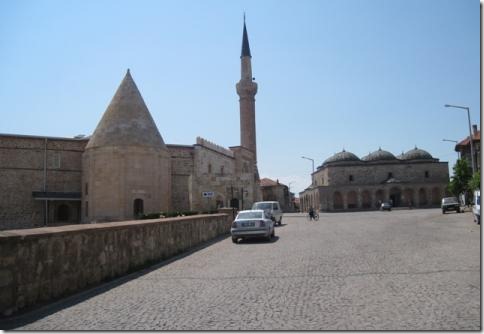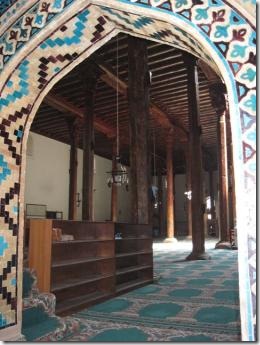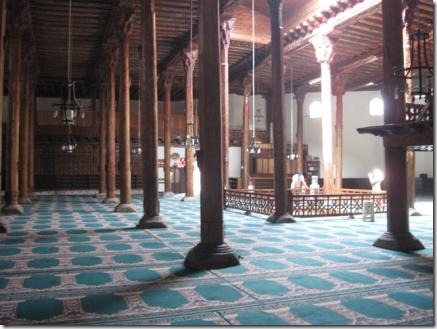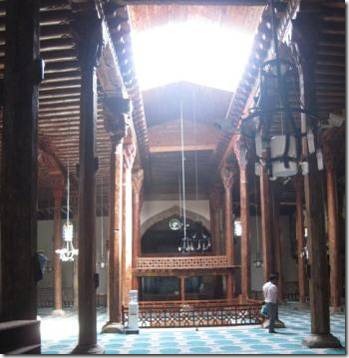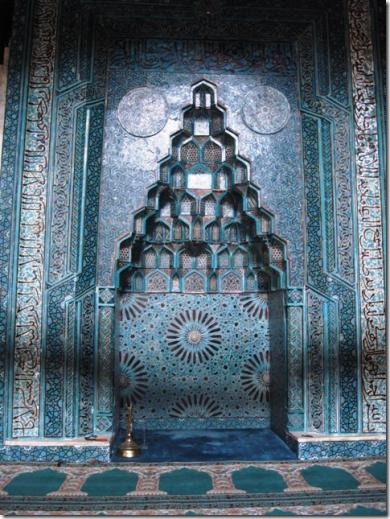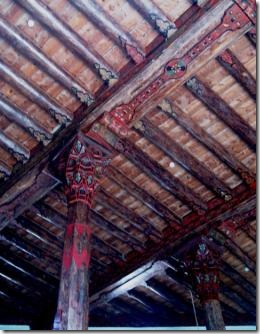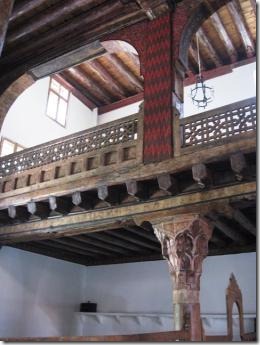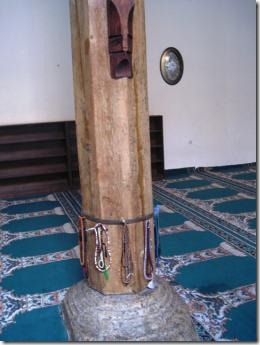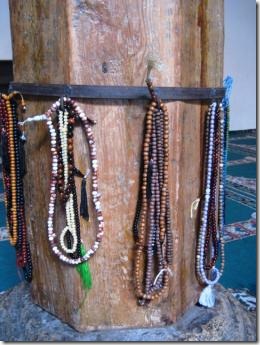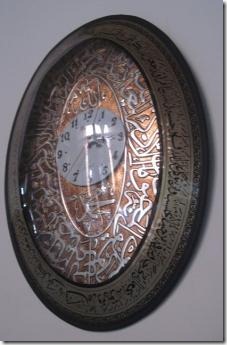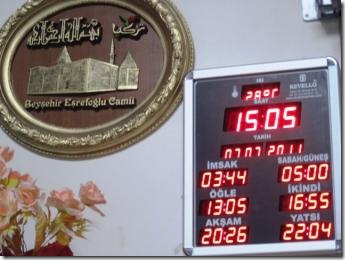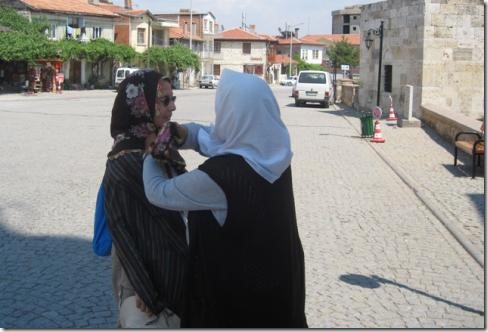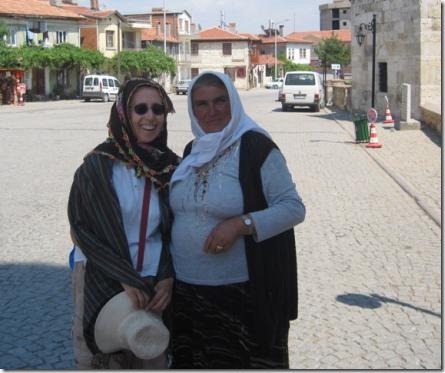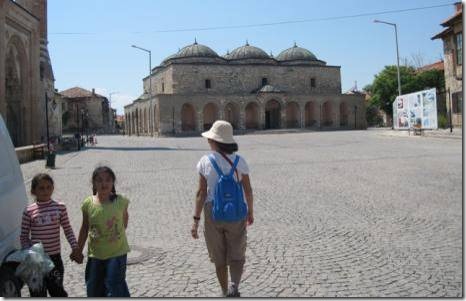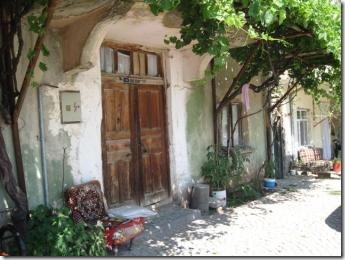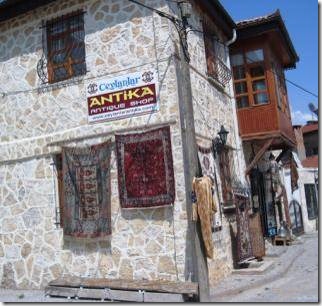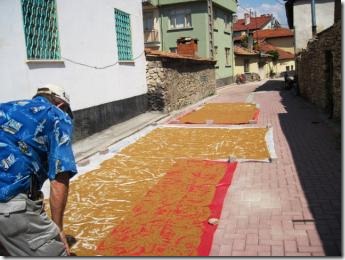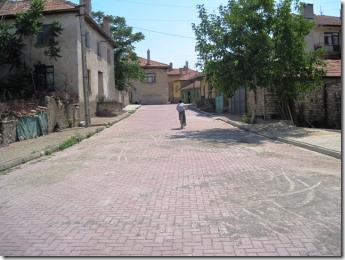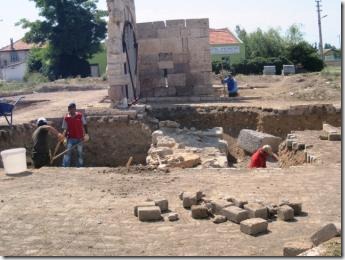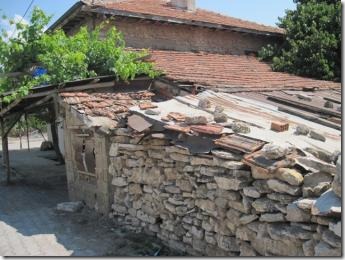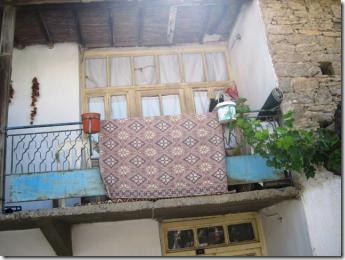"The main town on this region’s third major lake, fast growing Beysehir has preserved its Ottoman heart against the waves of modernity, and is home to one of Anatolia’s best medieval mosques. Founded around the 6th century BC, Beysehir has changed hands innumerable times in the course of its history (including 20 times between 1374 and 1467) but was most favored under the 13th century Seljuks, who considered it a second capital." Lonely Planet
Esrefoglu Mosque
“The Esrefoglu Mosque is the biggest and the most original wooden-columned mosque in Anatolia (Turkey.) It is located in Beysehir district, Icerisehir quarter. It was built between 1296 and 1299…..In winter times, the snow on the roof falls off to the pool in the middle from the hole on the roof and melts, therefore, with the humidity, the wooden columns do not dry and crack. The hole on the roof is closed and has no function since 1965.” …..It has been repaired from time to time after 1934. As a result of those repairments, the soil roof has been covered first with clay roofing tiles, then with copper.”
From the booklet Konya Mawlana published by Cetiner
The carved wood door and tiled entrance.
There are 42 wooden pillars: the former pool in surrounded by the low wood fence.
A better picture of the former roof opening now clear glass with the pool beneath. Pretty ingenious system. Many parts of Turkey get snow, not just on the tallest mountains. We biked past poles along mountain roads to let you know where the road is buried under the snow.
The 6 meter high mihrab covered with blue tile mosaics
Dictionary of Islamic Architecture
Mihrab
Niche or marker used to indicate the direction of prayer usually in a mosque.
Definition
A mihrab is usually a niche set into the middle of the qibla wall of a building in order to indicate the direction of Mecca. The earliest mosques do not appear to have had mihrabs and instead the whole qibla wall {the wall of the mosque that faces Mecca,} was used to indicate the direction of Mecca. http://archnet.org/library/dictionary/entry.jsp?entry_id=DIA0470&mode=full
The shape seems to be the same pattern that was on the carpet of the new mosque and you see woven into small prayer rugs….with the pointed part pointing towards Mecca. I certainly learn a lot writing up these emails so I can explain the photos to all of you! When I’m actually there, just seeing them seems to be enough without an explanation. But if you just have photos information is more important.
I found this mosque more beautiful than the Blue Mosque in Istanbul. Maybe the smaller size and the fact that I was one of the only people there so you could see. And none of the interior was roped off. My eyes, and so the camera, were drawn to the wood pillars and the blue Mihrab and the worry beads scattered around the pillars. I didn’t photograph upwards as I did at the Blue Mosque. I guess the camera doesn’t capture the world as it is, but rather what seems important to me!
Prayer Beads
“The History and Meaning of Prayer Beads
Over two-thirds of the world’s population employ prayer beads as part of their religious practices. Prayer beads have a variety of forms and meanings, but the basic purpose is the same: to assist the worshiper in reciting and counting specific prayers or incantations. Christianity, Islam, Buddhism, and Hinduism are the major religions that use prayer beads in important ritualistic roles.
Beads have long been linked with the act of prayer. The English word bead is derived from the Anglo-Saxon words bidden ("to pray") and bede ("prayer"). The use of beads in prayer appears to have originated with Hindu religious practices in India , possibly around the 8th century B.C.E. Buddhism, which developed from a sect of Hinduism, retained the use of prayer beads as it became established in China, Korea, Japan, and Tibet. It is thought that Islam adopted prayer beads through contact with Buddhism and Hinduism. Prayer beads, in the form of the Catholic rosary, were common throughout Europe by the late Middle Ages.
Muslim Subha
It is not clear exactly when Muslims adopted the use of prayer beads. Known as subha ("to exalt"), Muslim prayer beads usually occur in sets of 99 counting beads and an elongated terminal bead. The counting beads are used to recite the 99 attributes of God, with the terminal bead reserved for reciting the name of Allah. Though the number of beads is important, the type of beads used does not hold the importance it does in Hinduism and Buddhism.” http://anthromuseum.missouri.edu/minigalleries/prayerbeads/intro.shtml
The time clock and I think a clock telling the 5 times of prayers… The first time is the time for the first prayer before sunrise and the second time is sunrise when the pre-sunrise prayer ends. The other times are when prayers are offered. So prayers are offered 5 times each day.
Not a great look for me, but it was how I needed to be dressed to enter the mosque.
I returned the scarf which I could have bought for 5 Euro, about $7.50 which was way more than it was worth…to me anyway. I just gave her 3 TL for her time.
Dokumacilar Hani which was the cloth hall and now seems to be used for storage.
Homes across the huge square.
An antique shop.
Real antiques are strictly regulated and need batches of paperwork for export; not that we were in the market. No room on a motorbike for souvenirs.
Some kind or grain was put out to dry.
I wonder how many homes are actually occupied in the old section of town; we saw very few people out and about, but it was very hot.
There were no signs explaining what was being unearthed, but this was still old town so you never know.
An intriguing old town structure…..
And a hanging rug.
We were up early the next day and set off for Konya, home of the Whirling Dervishes and subject of the next few emails.
Ru
DoraMac

